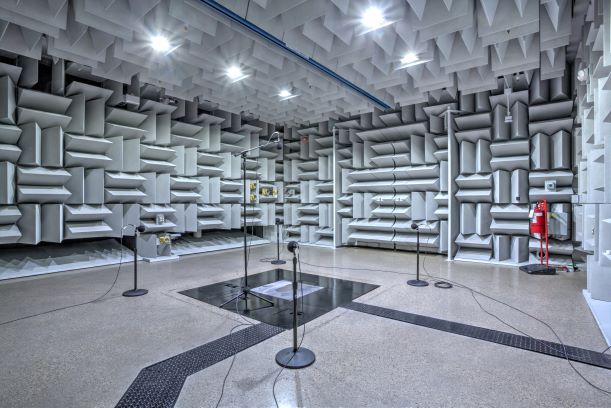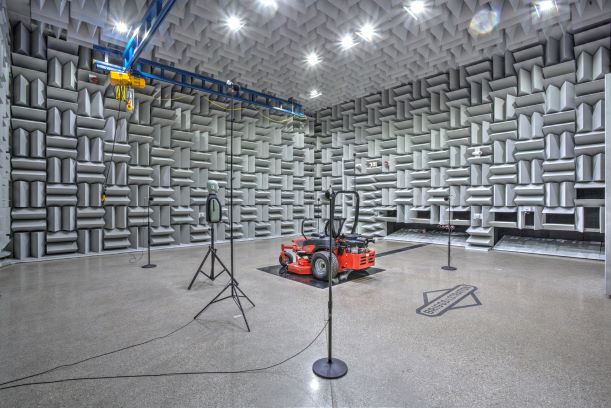The renovation was performed by ACS (Middleton, Wisconsin). The two anechoic chambers were designed and build by ACS and Eckel, which was also tasked with supplying the acoustic treatment for the test chambers. Installation of the acoustic wedges was performed by Viking Enterprises(Waterford, Connecticut)
Noise reduction has become a very important aspect of outdoor powered equipment design as consumers have demanded it and both the US and the EU have developed noise emission standards.
The smaller chamber, known as the 2M chamber because it accommodates a 2-meter hemispherical array of microphones for sound testing, has an interior dimension of 21 ft. 1½ in. wide, 26 ft. 4½ in. long and 10 ft. 9 in. high. This chamber is used for engine product development and testing of smaller finished products like lawn mowers, snow blowers
The larger chamber, called the 4M chamber, has a 4-meter hemispherical microphone array and has an interior dimension of 32 ft. 8¾ in. wide, 33 ft. ¾ in. long and 17 ft. 8 in. high. This chamber is used to analyze larger equipment like lawn and garden tractors and large home standby generators. Below the floor is an isolated 40 HP dynamometer. This chamber is also used for certification testing to ensure that products comply with domestic and international noise regulations. The chamber features a large overhead bridge crane to move equipment. Both chambers were designed with ventilation systems that provide 100% air change per minute to accommodate engine exhaust while maintaining a constant chamber temperature.
Having two chambers gives Briggs & Stratton increased productivity and unparalleled flexibility. The company makes engines not only for its own branded

Briggs & Stratton’s 2-meter chamber is used for product development.

Briggs & Stratton’s 4-meter chamber is used for certification testing
Latest from Lawn & Landscape
- Sgro named Yanmar Compact Equipment's North American president
- Aphix acquires Curb Appeal Landscaping in Birmingham
- Project EverGreen helps revitalize Milan Park in Detroit
- Trex Company wins Product of the Year, Judges’ Choice Winner at Environment+Energy Leader Awards
- General Equipment & Supplies in Fargo adds Takeuchi equipment
- Mariani Premier Group acquires Hazeltine Nurseries
- EnP Investments adds Mark McCarel as Northeast territory sales manager
- Our April issue is now live





